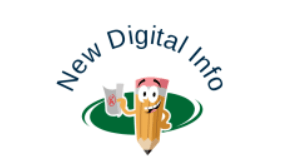Being well positioned on the internet is one of the main objectives pursued by any business that has a website. To achieve this, we have two ways: to work on SEO and / or SEM. The organic search part would be achieved with an SEO strategy, while the paid ads part would correspond to the SEM. Well, today we want to focus on SEO, specifically on page SEO.
What is on page SEO and what is it for?
As a reminder, SEO stands for Search Engine Optimization. When we talk about SEO on page we refer to all those optimizations that can be done internally on our website to improve search engine positioning. That is, all those actions that depend on us 100%.
Although it is true that SEO on page is the most common way of calling it, it is possible that on some occasion you will also see it reflected as internal SEO or SEO within the page.
Working on internal SEO is useful in two ways:
- We help Google understand our website so that it is easier to crawl and index.
- We offer the user a good experience and respond to their search intentions.
As you can see, it is essential to work on SEO on page. If you want to know how to do it, throughout this post we will talk about the key points you have to work on to optimize your website internally.
Differences between SEO on page and SEO off page
Before continuing to talk about SEO on page it is necessary to talk about the differences between SEO on page and SEO off page. The first thing to keep in mind is that they are not exclusive, rather the opposite. If you really want to climb positions in search engines, you should work both parts.
The SEO off page is one who works out of our website. By reinforcing it, we look for other websites or social networks to add links to our page to help us position ourselves better. Meanwhile, with on-page SEO we want to be able to be easily indexed and for the user to have a good experience within our site.
What on page SEO factors does Google take into account?
Having seen the importance of working on SEO on page, we are going to go into the factors that Google takes into account to evaluate our website.
The goal you should keep in mind is that the robots that crawl our website can easily find us and can correctly read the information on our site. Google, the most used search engine in the world, is the one that marks the relevant elements and aspects that we must take into account to achieve a better organic positioning.
The first thing we will have to do is check that our site is correctly indexed. When we talk about indexed websites, we refer to websites that can be found on the internet through a search.
It is important not to confuse “indexed” with “public” . We speak of a public website when it is open and users can access it only through direct access.
Faced with this, how can you know if your website is indexed ? A simple way is to do a Google search with your business name and URL, since it is the minimum for which you should rank. If your website does not appear among the results, it is that it is not correctly indexed. It is important to review this, because if the crawling robots or “bots” cannot find our website or cannot index it, it will not appear in Google results and all our work will be in vain.
If by doing this little check your web page appears in Google, congratulations, you have already completed the first step. If, on the other hand, your website does not appear, we will explain in this post how to carry out the indexing of a website .
Once the indexing has been verified, you have to continue advancing in the elements of on-page SEO that you must work on and that we will explain one by one below.
1. Quality content that responds to search intent
We will start by talking about the content . The phrase “content is king” is a present and future reality. Google highly values the content on web pages, as long as it is relevant and really helps users, so writing for the sake of writing is not worth it.
Analyze well all the pages of your site and see if they have content and that it follows the following guidelines:
- We must respond to the user’s search intent . It is essential that the content is focused on satisfying the user’s search needs. If Google considers that our content helps users and they stay longer on our site, it will help us to position ourselves better.
- Base our content on a keyword . All content must be focused on working on a keyword or keyword. This keyword must be spread throughout the text, in the titles and subtitles. Of course, it is important that it be treated in a natural way, since the naturalness in the texts is increasingly valued. To enrich the user experience, and therefore Google’s, we recommend using synonyms for your keyword throughout the writing.
- A more complete and long content usually positioned higher in Google rankings.
But it is not only necessary to take into account the good practices to position the content in Google. On many occasions, due to ignorance, we fall into certain errors that Google can penalize. Some of them are:
- Duplicate content . Check that you do not have the same content on more than one page. Forget about copying and pasting from other web pages and, of course, don’t do it with texts within your site either. Thinking that putting the same thing on several pages of your website does not penalize is a mistake. Make an effort to create original content in each of the sections.
- Cannibalization . The concept of cannibalization refers to the use of the same keyword on multiple pages. With this, what we do is that each of these pages compete with each other to position in Google.
- Keyword density and prominence . One of the most common mistakes is the excessive repetition of keywords, which is known as “keyword stuffing”. This repetition of keywords is penalized by Google, so we recommend that you do not over-optimize the posts. To avoid falling into this error, follow the advice we have given you previously: use synonyms and related terms.










